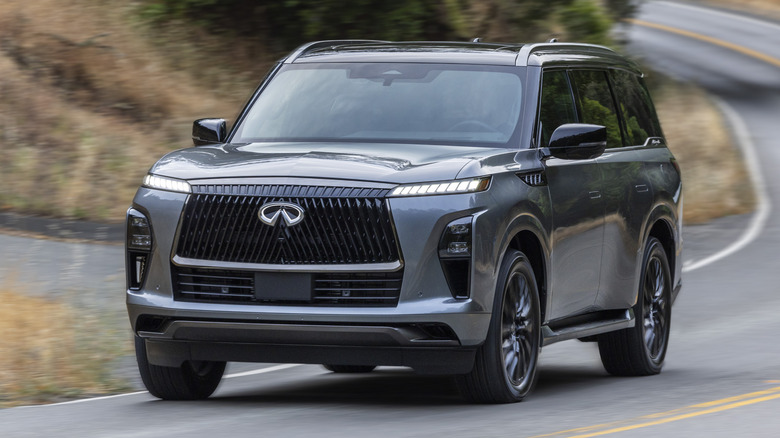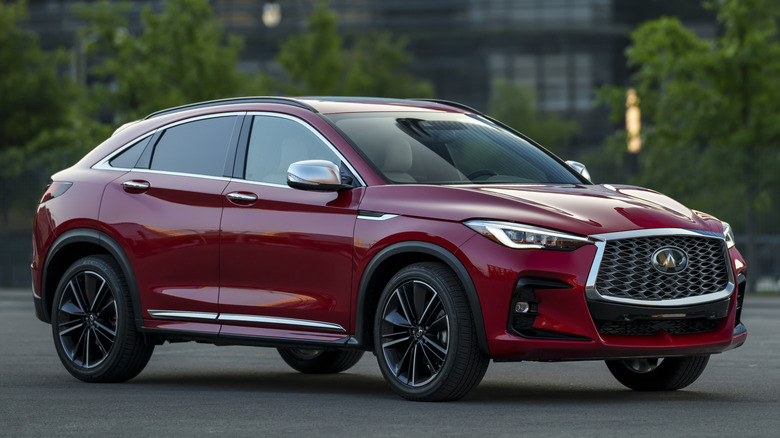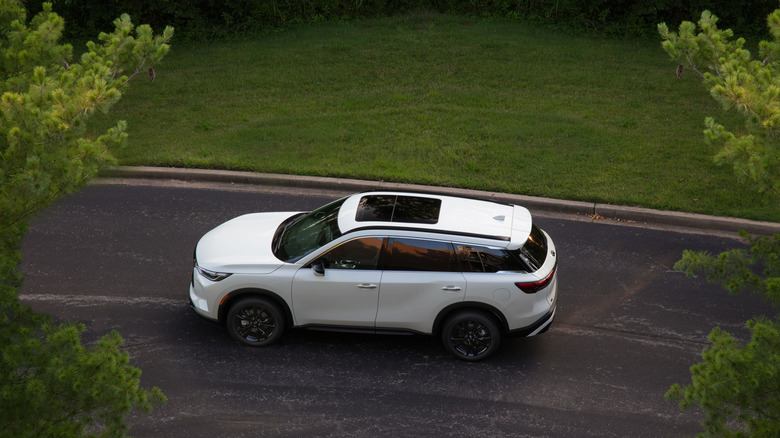Are Nissan And Infiniti Cars Really Made In The Same Factory?
By the 1980s, Japanese manufacturers had gained a firm foothold on the economy-focused end of the car market, and they wanted to diversify. One by one, the country's largest automakers each launched luxury brands — Honda formed its Acura division, Toyota created Lexus, and in 1989, Nissan established the Infiniti brand. At its launch, two Infiniti models were available, the M30 coupe and Q45 sedan, but changing buyer tastes mean that neither body style is offered in Infiniti dealerships today. Instead, the brand's 2025 lineup consists of four SUVs and crossovers: the QX50, QX55, QX60, and QX80. The Q50 sedan was discontinued after 2024.
While Infiniti cars offer more upscale features, plusher upholstery, and a wider range of optional extras than their Nissan-branded counterparts, they share many components and, in most cases, are built on the same production lines. Infiniti builds its U.S. market cars in three different countries on two different continents, although because of the impact of President Trump's tariffs, it might not stay that way in the coming years.
Three out of four Infiniti models are imported
While Infiniti does make one of its models in the U.S., most of its current lineup is manufactured abroad. The brand's two entry-level crossovers, the QX50 and QX55, are both built in the COMPAS Plant in Aguascalientes, Mexico, which is a joint venture between Nissan and Mercedes-Benz. The plant is also responsible for producing the German automaker's GLB model. It is a relatively recent addition to Nissan's global network of facilities, having only started operating in 2017. However, its future already looks shaky, as in the wake of the U.S. government's tariff announcements, Infiniti stopped taking orders for the QX50 and QX55.
Even before tariffs were announced, Infiniti had already confirmed that both the QX50 and QX55 would be discontinued after the 2025 model year, with the brand planning to focus on larger SUVs from 2026 onwards. It has promised multiple new models including a new generation of the QX60 and a related SUV coupe model, the QX65, but has yet to confirm where production of either will take place.
Adapting to the new rules
It seems likely that the new generation of the QX60 will be built in the same location as the current generation of the model, at Nissan's Smyrna Plant in Tennessee. In an interview with CNBC, Nissan of America chairman Christian Meunier said he planned to "max out" production at the Tennessee plant, which was running at around 50% capacity in 2024. The plant currently assembles the Nissan Rogue, Murano, Leaf, and Pathfinder, alongside the Infiniti QX60. Given that the upcoming QX65 will reportedly be based on the same platform as the QX60, it's likely to also be built at the Smyrna plant.
Although it seems that Infiniti is shifting away from Mexican production and towards a higher level of U.S. production, it remains unlikely for now that its entire American market lineup will end up being domestically built. The brand's largest and costliest model, the QX80, is still built in Nissan's Shatai Kyushu Plant in Japan, alongside various other full-size SUV models. The Japanese plant handles the automaker's global full-size SUV output, manufacturing the Nissan Armada for North America, the Nissan Patrol for various Asian markets, and the related Nissan Elgrand minivan for the Japanese market. The latest generation of the QX80 launched for 2025, and so despite the potential impact of tariffs on vehicles imported from Japan, its production location is unlikely to change for the foreseeable future.


